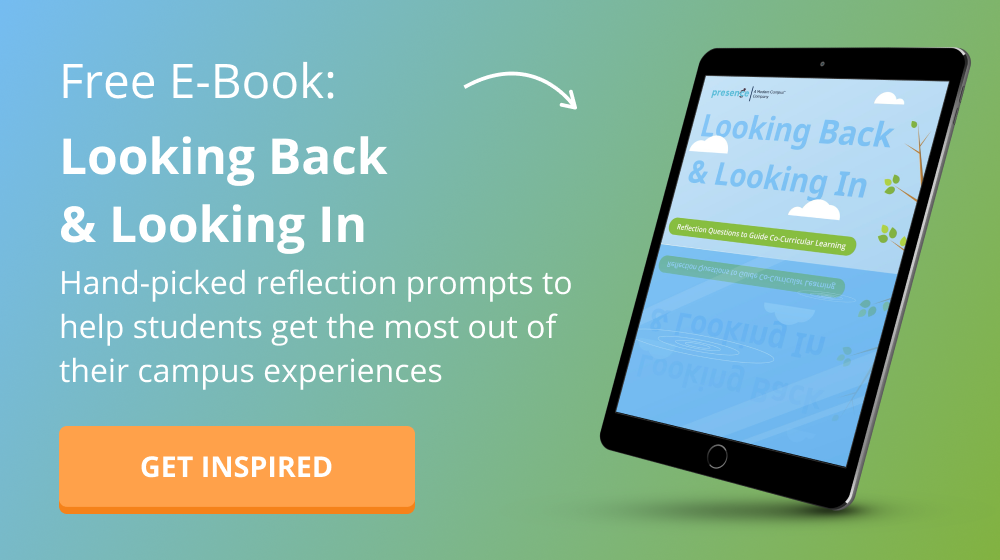You likely have some student learning outcome statements — that is, statements that reflect what skills or knowledge sets you want students to learn as a result of your office or division’s programming.
You may have created these statements because someone told you to, because you were inspired by a colleague, or simply because you recognized that the interactions you have with students (and they with you!) can result in a change of student knowledge, skill, or behavior. Either way, if you have these statements but are not sure if they are quality, appropriate, or “enough,” then this blog post is for you. It’s also for anyone seeking to create learning outcomes for the first time!
I’ll cover key considerations and steps you can take in either creating or reviewing and refining your learning outcomes.
The information is presented chronologically, in the order of how I usually evaluate learning outcomes. But you do not necessarily have to follow the same order, especially if aspects of the considerations do not apply to you and your outcomes.
Purpose Check
First and foremost, you should check to see if your learning outcomes are indeed concerned with student learning.
Is each statement describing something your staff or interventions do (such as providing programs and opportunities, creating awareness, encouraging participation, or tracking attendance)? If so, you’re not talking about student learning; you are talking about operational outcomes, objectives, goals, or purposes. That information can be a useful starting or reference point in relation to student learning outcomes though. For example, if you provide programs, think about what students gain from participating in those programs. Then, you’ll be on track to articulate some learning outcomes.
Next, without getting into the weeds of analyzing each word of an outcome statement, you can check to see if the general nature of your department’s intended impact on students is covered. For example, if your office coordinates civic engagement, leadership, and educational programming for students, but all of your outcomes are focused on student leadership development, then you’re likely missing pertinent learning outcomes for the rest of your interventions.
This step is different from determining whether learning outcomes should be written for an individual workshop or for a workshop series (I’ll cover that later); here, you are looking for high-level coverage for the topical knowledge, skills, and behaviors. As I alluded to before, this could be a good opportunity to look for possible alignment with operational objectives or to think about the amount and types of services offered by your area and whether your learning outcomes cover that spread.
Amount
There is no magic number for the right amount of student learning outcomes. You should have as many as are necessary or appropriate for the interventions you offer students.
Assessment literature may caution against having too many outcomes (think 20 or more), but that’s not because you should limit your potential influence on student learning. Rather, it’s because good assessment practice involves having multiple measures at multiple points in time in order to understand how student learning may have changed. And doing assessment for too many outcomes can be pretty taxing. It can spread your resources and focus too thin to bring about meaningful changes.
As I said before, it can help to think about your department’s purpose and consider if the amount of learning outcomes you have are reflective of the impact you think your interventions can make on students. More pointedly, you want to be sure you have meaningful coverage for the scope of your content. For example, if you offer a one-time loan borrowing service for students geared toward financial literacy, you may only have a few learning outcomes. Conversely, if you offer a full residential education curriculum with multiple passive and active programs throughout the year, you should have many more outcomes.
Language Examination
Once you’re ready to go a level deeper than the purpose check, you should examine your outcome language., Does the language of each statement align with the learning you’ve intended? For example, if you want students to be able to apply what they learned about leadership to make changes in their own organizations, then you shouldn’t have a learning outcome statement that’s merely about summarizing their definition of leadership. The application of learning is what you are concerned with, not summarizing or defining.
You should also make sure that your learning outcome statements are specific. Specificity can be considered in two contexts. First, is your learning outcome specific to your departmental area, its interventions, and the student populations you serve? If so, you’re all set here. If not, you may be using a learning outcome statement which should be (or already is) shared by other services or departments. And when that is the case, you should be collaborating with such offices to articulate (and measure) a collective outcome which might be seen by students engaging across your areas.
The second specificity check is to make sure your learning outcomes are written at the right level of detail. Should your outcome be specific to a single program or pertain to a program series? Should it aim to capture knowledge gained in the moment or behavior changed over time?
See the example outcomes below and how they fit with those two consideration questions.
Outcome #1: After a gender identity workshop, students will summarize the importance of personal pronouns
- outcome for a single program
- outcome for knowledge gained in the moment
Outcome #2: After attending a month of DEI programming, students will describe at least two actions they took over the semester in using their privileges to fight for equity
- outcome for a program series
- outcome for behavoir changed over the time
No matter the program, you should consider reasonable expectations based on your participants and what you’re providing them. To evaluate this, don’t think from your perspective as a subject matter expert; try to think like a student. Better yet, involve students to help determine scope and specificity. Perhaps they can offer feedback as to what expectations are realistic.
A final language consideration is whether measurement of your outcome statement yields meaningful insight on student learning. In other words, would measuring this outcome be worthwhile? Would it satisfy a need or answer a burning question about the impact of programming? If so, great! If not, revisit your purpose and make sure this outcome is relevant to include. Maybe you’re circling an idea but haven’t found the right language just yet. Keep refining until you get a “yes” here!
Clarity
A first consideration for understandability is: could your learning outcome be simpler? If a single outcome attempts to cover multiple concepts or behaviors, consider if you can split it in order to focus on a single skill per outcome.
Your outcome statements should also be easy for other people to understand. To check if they are, you should share your outcomes with:
- External colleagues – Would someone outside of the institution, such as a friend working at a nearby college or university, consider your learning outcome relevant to your functional area?
- Internal colleagues – Would someone recognize the outcomes’ alignment with divisional and/or institutional values?
- Students – Would students know what you are talking about? If they can translate your learning outcome statements into their own words, consider jotting down these paraphrasings. Their version may be more appropriate than the potentially too-academic or lingo-filled language you first drafted.
In my opinion, student understandability is the most important facet here, given they are the most relevant stakeholders. There is so much we can do to collaborate with students for assessment purposes, but this is one of the easiest ways to involve them and give them a voice in their own learning development.

As you are looking to finalize your assessment plan, make sure to review your learning outcome statements. I propose considering the purpose, amount, language, and understandability as ways to review and refine your learning outcomes.
Do you have other steps, tips, or considerations? Share with us at @themoderncampus and @JoeBooksLevy.





